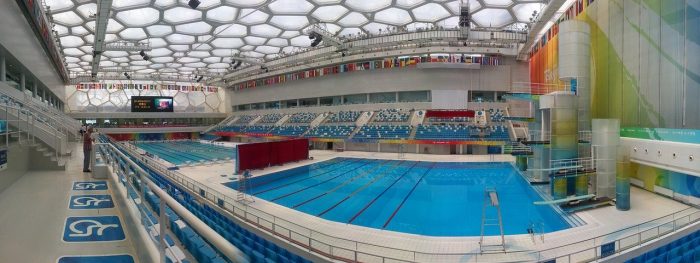When speaking about swimming as a sports or recreational practice, there has been some evidence showing that it dates way back. Starting from painting, scripts, to the famous books ancient books where swimming was mentioned – the Bible, the Quran, etc. Moreover, Olympic swimming has its own long and rich history. If you want to learn more about the roots of this amazing activity, stick around and dig deeper into the history of Olympic swimming.
Where it All Began
The first swimming organization on the global level was created in London. Ever since 1837 swimming was regarded as a sport, and what logically comes with sports? Racing and competitions. The first-ever official swimming competition happened in Australia, and soon enough, it started to happen on an annual basis. These were the first steps toward competitive swimming as a discipline.
As far as the Olympics are concerned, swimming was included from the start. The first Olympic games as we know them today, in 1896, included swimming.
First Years of Olympic Swimming
During the first 16 years of the Olympic Games, swimming had only the male category. women category was introduced a bit later, in the capital of Sweden – Stockholm. Moreover, the early days of the Olympics in Greece, Athens, brought many new swimming events. One of them being the 100m freestyle for sailors which was exclusive to the Greek navy members.
Another quite interesting fact is that during the first twelve years of the modern Olympics, swimming competitions included swimming in the open water. Due to the unpredictable weather changes, this was soon to be changed.

Novelties and Changes
With the development of technology and better swimming conditions, many pre-World War II records were soon broken. Not only the swimming facilities were improved, but the swimming techniques and approach to training were also quite different. It led to the creation of superathletes.
Another thing that changes greatly in this period was the swimming suits. The suits worn by the athletes used to be far less hydrodynamic, and the swimming experts started working on this element, too. And as already mentioned, many swimming competitions at the Olympics started to move indoors, where the swimming conditions can be controlled.
New Wave of Swimmers
Just like in other sports, swimming was bound to start producing some legendary athletes. The first swimmer who gained massive attention was Mark Spitz. The American athlete managed to take seven gold medals from the Munich Games in 1972 to his motherland.
A few years later, another swimmer worth the talk appeared. Kristin Otto from Germany was the first woman to get 6 gold medals at Seoul 1988. All of their performances set foundations to the competitive Olympics swimming as we know it today.
Let’s not forget to mention Michael Phelps, one of the world’s greatest and most popular swimmers of all time. The swimmer even managed to break Mark Spitz’s Munic Games record, and win 8 gold medals in 2008.
It is Still Changing
Ever since 1896, swimming competitions and events have had many additions and changes. As far as the swimming techniques are concerned, the butterfly stroke was introduced at Melbourne Games in 1956, the almighty leap was introduced in Mexico City 1968, and there will be some changes in 2020, too.
Gender mixed swimming races are announced for the Tokyo Olympics 2020, as well as equal number of events for both women and men.

